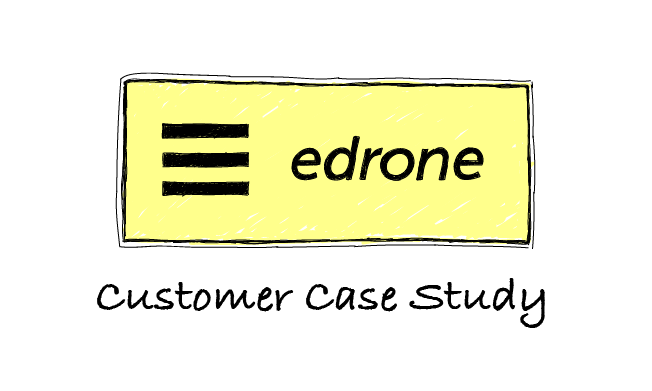A business development team is a crucial element of a SaaS company. It plays an important role in business growth and revenue generation. Let’s take a look at the backstage of their job.
I’ve prepared this post in collaboration with Yurii Veremchuk, the Head of Woodpecker Business Development Team, who shared some first-hand insights into the day-to-day work of his team and the challenges they face, described the tools that improve their efficiency, and gave his advice for B2B sales newbies.
How does a typical day in a SaaS business development team look like?
The key to smooth and effective workflow is a clearly established process. It should be quantifiable in order to measure and analyze the results. It’s important to know what you’re trying to achieve by your actions. Always have the overall goal in mind. Set up a timeframe for the implementation of your ideas.
Plan your next steps in detail and make sure all your team members are on the same page and understand what and when needs to be done as well as the main goal from the business growth perspective. The employees feel more engaged when they see the impact their work has from a bigger picture view.
Treat the process as a work in progress and be ready to improve it over time. Technology development, business growth, new trends – all that has an impact on your workflow.
In Woodpecker we devote the first hour of our working time entirely to answering emails we received overnight from the prospects who live in different time zones. Reply time plays a key role in outbound sales. We need to strike while the iron is hot and turn prospects’ attention into a business dialog.
After that, we gather together for a short weekly meeting. The way we manage our projects in the outbound team has the elements of SCRUM methodology. We set the goals for the upcoming week that are in line with the annual targets for the team and company. We portion bigger projects into smaller chunks. Approaching complex tasks with small steps is more effective for us.
We also discuss last week’s achievements, draw conclusions from every little success or mistake, and give each other constructive feedback. If the goal for last week was not achieved we try to identify the reason and look for ways of improvement.
A very important element of our workflow is writing down all the tasks on colorful sticky notes attached to a whiteboard. Each sticky note represents one task. Each task is assigned to an individual team member. Once the task is finished, it’s moved to the “completed” section.
How do you share work in the team?
The team consists of 4 persons: 3 BDRs and the Head. What does BDR stand for? It’s short for Business Development Representative. BDRs’ tasks include doing the research, prospecting, personalization or co-building the sales strategy. In Woodpecker each member of the team is assigned to his own set of tasks within a process they specialize in.
Team leader oversees the work and coordinates the most demanding project. We put a lot of effort into lead generation. We try to make it as effective as possible, so we focus mainly on reaching out to prospects who match our ICP.
Team leader discusses the best strategy with an SDR. Together they create a customer journey matrix and determine the best way to reach out to that specific group of prospects.
What is your role as the Head of Business Development?
I make sure that every team member has the possibility to develop their skills and achieve their own professional goals. During individual meetings, we discuss their priorities and professional aspirations.
Also, my role is to inform the team about business growth plans on a company level and long-term sales strategy. I provide the team with a broader context for the upcoming projects and initiatives.
Who are your target prospects?
Our ideal customers are SaaS companies, lead generation agencies, software houses, fast-growing start-ups, and consulting companies. We’ve noticed that they benefit the most from using a cold-email outbound approach.
We focus on generating worldwide interest, but we mainly target the prospects from Central and Western Europe, USA and Canada. The size of a company doesn’t really matter for us. We have solo entrepreneurs as well as companies with 500+ customers onboard.
Higher position usually implicates the decision-making power, so we typically reach out to Head of Sales, Business Development leaders, VP of sales, Heads of Growth or CEOs of small startups. They are most aware of the pain points and needs of their team as well as have the necessary resources.
Tips on creating the Ideal Customer Profile based on our experience
When you try to define your Ideal Customer Profile, think about the companies, which are most likely to succeed using your product or service. If they can achieve their desired results thanks to the solution you offer, they will become your loyal customers. Only when they feel that your product adds value to the development of their company, they will stay with you for a long time. Once you define your Ideal Customer Profile, you will be able to target your outbound email campaigns at the right prospects with better results from the very beginning.
If you’re curious how we made the first attempt at defining our ICP, go ahead and read this post >>
It’s not the end of the story, though. You need to keep your ICP up to date as your company develops. The ICP evolves with it. Your client base grows and becomes more diversified. Make sure to organize regular meetings with team leaders in order to rework your ICP according to the changes in your customer base.
Thoroughly analyze customer data. Sales team plays a crucial role in this process, but only in cooperation with the marketing team, customer success team and even the product development team, it’s possible to get a full picture of the traits and characteristics of your ICP. In Woodpecker, we put substantial effort into getting as much information about our customers as possible in order to draw conclusions and target look-alike companies.
Learn about our data-driven approach to keeping our Ideal Customer Profile up-to-date >>
We’ve gone beyond internal discussions and, in order to gather first-hand data, we scheduled interviews with some of our best customers. We’ve learned a lot about their business priorities and experience with using Woodpecker. There were 65 interviews in total. The conclusions we drew let us validate or invalidate the hypotheses we had about our ICP. Additionally, we’ve deepened our relationships with the customers and let them meet people behind Woodpecker.
Read how we made that happen and what we have learned >>
If you’re a SaaS startup that has just kicked off and you only have a vague idea of who your ideal customers may be, analyze the types of companies targeted by your competitors. Start from there and rework your Ideal Customer Profile with time.
Where do you look for new prospects? What B2B sales prospecting tools do you use?
Creating a contact list that is rich in valuable, up-to-date information is a very time-consuming and, let’s be honest, mundane task. Plus, to keep the pipeline full, you constantly need to look for fresh prospects. Fortunately, technology comes to rescue. Prospect list building tools save hours of our time by automating the process, so we can focus our attention on planning out the campaigns and polishing up the strategy.
We’ve tried out around 11 B2B sales prospecting tools so far including SellHack, FindThatLead, Quickreach.io, and UpLead among them. We assess their functionalities and post the reviews on Woodpecker blog. Finding well-targeted prospects to contact is crucial for starting valuable business dialogs. We hope our reviews will help other companies chose the most suitable prospect list building solution tailored to the needs of their business.
Additionally, we research Google, LinkedIn, and Twitter to find the decision-makers working in companies that meet our criteria to whom we direct the messages. We use the data gathered to personalize cold emails and follow-ups with customized snippets.
What other tools does the business development team use on a daily basis?
Cloud tools help us improve and speed up many processes for better efficiency.
We use Google docs to draft email copies and other content, like internal procedures and playbooks. It’s a good solution for teams because docs can be co-edited in real-time instead of exchanging emails with attachments back and forth.
Slack is the main communicator for our team members, but also for the whole company. We use various channels in order to organize the conversations and not to lose track of things. Each team has its own channel to discuss current projects and ad hoc topics. There are also some company-wide channels for announcements or general discussions.
Basecamp helps us structure the projects and divide the tasks on a company level. We use it when we cooperate with other teams on some projects. Let’s say we’re working on a new project and need the marketing team’s assistance in creating an email copy for a new campaign. We assign the task to a copywriter in Basecamp with a short description, so both parties are on the same page.
We use Zoom for webinars, demos or video meetings with the customers.
And of course, quite obviously, we use Woodpecker to send cold email campaigns to the prospects. It’s the heart of our operations.
What are the biggest challenges for a business development team?
Inbound vs outbound lead service
People new to B2B sales or having experience in inbound sales only should be aware that there are significant differences in taking care of inbound leads comparing to approaching outbound leads.
Inbound leads already know a lot about the product and the company. They found you online, came across your website or social media profile and signed up for a newsletter, trial or to get some extra materials like a free ebook. Whatever the interaction, it was their decision.
Usually, an inbound lead has specific questions concerning the product or service. In simple words – they know what they want. It doesn’t mean you should leave them to self-service and limit the contact to solving their problems when they need it, though. Show the initiative. Ask them how the trial is going. Offer help. Be proactive. Building a relationship from the very beginning has an impact on their decision to churn or stay in the future.
With the outbound leads, you are to guess the needs of prospects. Since they most likely never heard of your product before you need to provide context for your solution and reason why you decided to reach out to them. Engage them in a dialog and lead them step-by-step through the onboarding process.
Here are some more advice on how to approach inbound and outbound leads >>
Prospecting is one of the most important elements of a Sales Development Representative’s work. It takes a lot of effort, time, and resources. Finding the most effective way to reach the right prospects is a real challenge.
Compliance with GDPR
Knowledge of personal data protection acts and legal procedures in each country, such as GDPR, is crucial for an SDR. We always make sure that we respect prospects’ data and their wishes regarding processing the data.
We have prepared a GDPR guide for email senders that every SDR should read >>
How do you measure success in a business development team?
We have a set of KPIs used to evaluate team’s performance as well as individual SDR’s performance. They reflect major business objectives and are in line with the company’s growth strategy. There are different metrics for measuring various processes, for example, the number of qualified leads generated, trials or conversion rate.
What advice would you give to new business development representatives?
Start with acquiring a piece of in-depth knowledge about the product as well as familiarizing yourself with the ICP. You should know all the nitty-gritty details of what you’re selling and to whom you’re selling it, thus you can highlight the features of your product that suit the needs of your prospects best.
Invest your time in courses and training. Hone your skills. Learning is a continuous process. Whenever you feel too comfortable, it’s probably time to take a closer look at your working style and check if you didn’t get into a rut. Be on top of new trends in the industry. Every now and then attend meetups and conferences for salespeople. Discover and test new software, techniques, and strategies. If you stop your professional development, you will stay behind others.
Trust the process. The results of your actions are not visible immediately. It may be difficult to stay motivated if you don’t see the effects at once. Don’t get discouraged. You will see the outcome with time.
Be patient. Rome wasn’t built in a day. It takes time to achieve some level of proficiency in B2B sales. Measure and analyze the results of your cold email campaigns. Improve on the base of your conclusions.
But getting a prospect’s attention is just one side of the coin. Closing the deal is the other. The right questions to ask and the best ways to show the value of your product is something you learn with time and practice, provided you have the ability to listen to your prospects carefully.
What resources would you recommend to learn more about business development?
Internet fora and social media groups are a mine of information for BDRs. To learn the secrets of selling you need to be where other sales specialists share their knowledge and experience. Check out LinkedIn, Reddit and Quora.
What Hubspot, Salesfolk, Close.io, and RightHello have in common? Their blogs are a rich source of expert knowledge about sales. Make sure you read them on a regular basis to learn about interesting case studies, newest research, stats, and advice from sales gurus.
There are two books every B2B sales development representative should read: “Predictable Revenue” by Aaron Ross and “Little Red Book of Selling”
Always learn from the best. Follow the advice of sales experts. Read the content they publish. Draw conclusions from their experience and think of ways you could implement their ideas in your projects.
What do you look for when hiring a BDR?
We start by preparing an ideal candidate profile. In order to find the most suitable person for our team, we need to define the traits we look for in a candidate. Then we prepare specific interview questions to learn about a candidate’s attitude, skills, and working style.
We look for a Business Development Representative who is:
- goal-oriented – focused on accomplishing personal, team and company goals;
- willing to learn – as mentioned before, lifelong learning is an integral part of this career path;
- creative – creating an intriguing cold email copy can be a challenge;
- empathetic – ability to get into prospect’s shoes and understand their pain points is necessary to offer them a solution that solves their problems or improves their daily work;
- open-minded – routine kills creative thinking.
Good interpersonal skills are very important for the role of a BDR. We believe that both extroverts and introverts are fit for the job. It’s not about being a good talker but mostly about asking the right questions, being inquisitive, involving the prospect into a dialog, but also listening with attention. Good listeners are often good thinkers. They are better at understanding the needs and problems the prospects have and are able to offer a better solution.
In our recruitment process, we aim at candidates who share Woodpecker’s values. We strive to maintain work culture based on partnership, trust, transparency, and communication. It’s the people who make the company great.
Back to you
Woodpecker Business Development Team does a great job. Their hard work is a significant contribution to the company’s success. Thank you, guys!
Now, tell us more about your business development team. How do they work?
READ ALSO

New to Sales? How to Learn Cold Email as an SDR
If you’re a fresh SDR hire, or were made the one responsible for outbound email campaigns not so long ago, then this article is for you. I feel your struggle. Outbound can be pretty intimidating at first. You need to read and practice a lot before you're able to do it confidently. With this post, I want to show how to learn cold emailing.

SaaS Partner Program – How to Find and Pitch to Partners?
Getting new partners for your SaaS Partner Program might be challenging. Getting new partners that fall within your Ideal Partner Profile might be even more difficult. With the right tools in the box, though, you might find it as easy as can be. Follow this clear 3-step path to get more partners and an increasing stream of new leads. Let’s start, shall we?

Customer Case Study: How edrone.me Builds Relations with Future Customers Using Cold Email
It's a dream for a SaaS team when they hear that a customer of theirs is satisfied with the service and wants to share their experience as a case study. That's what happened to us when Michal Blak, the Co-founder and CEO of edrone.me told us that he's open to tell the story of his team's experiences with Woodpecker. Michal Konieczny, who takes care of business development at edrone, added his two cents and here we are. Check how the e-commerce CRM uses Woodpecker to start conversations with their ideal customers.

